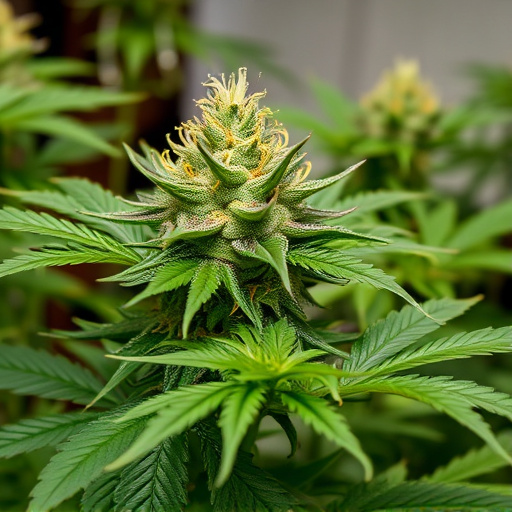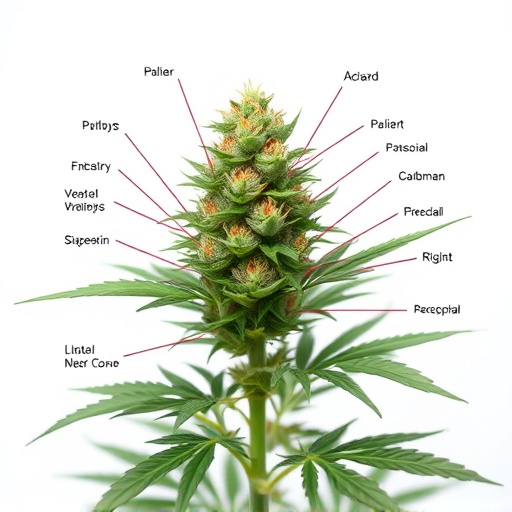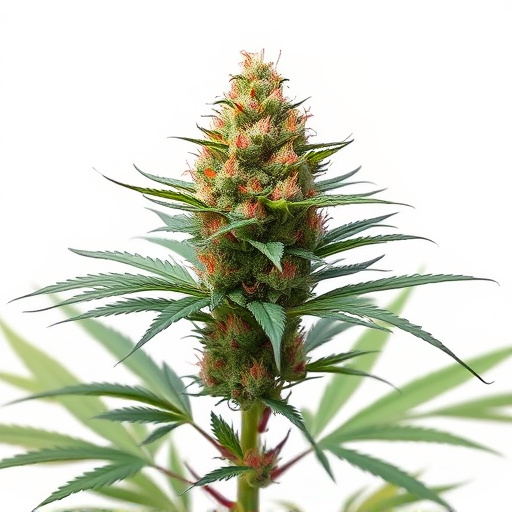Cannabis, through its key compounds THC and CBD, offers potential solutions for pain management by interacting with the body's endocannabinoid network. Recent studies highlight the benefits of these compounds in managing various types of pain, especially appealing for conditions where THC's psychoactive effects are unwanted. The exploration of the newest strains of cannabis has revolutionized pain management, providing precise dosing options like high CBD strains for anti-inflammatory conditions and hybrid strains combining THC and CBD for comprehensive relief.
“Discover the potential of THC and CBD as natural pain management tools. This comprehensive guide explores how these compounds, found in various newest strains of cannabis, interact with our bodies to alleviate discomfort. From understanding their roles in pain perception to uncovering their unique mechanisms of action, we delve into the science behind cannabis as a viable alternative therapy. Find out which strains and varieties offer the best relief for specific types of pain.”
- Understanding THC and CBD: The Role in Pain Perception
- Mechanisms of Action: How These Compounds Interact with the Body
- Exploring Newest Strains: Effective Varieties for Pain Management
Understanding THC and CBD: The Role in Pain Perception

Cannabis has gained attention for its potential in pain management, largely thanks to two prominent compounds: THC (tetrahydrocannabinol) and CBD (cannabidiol). While THC is known for its psychoactive effects, responsible for the ‘high’ associated with cannabis, CBD doesn’t produce this sensation. This makes it a popular choice among users seeking relief from pain without mind-altering side effects.
In the complex system of the body, THC and CBD interact with specific receptors in the endocannabinoid network (ECN), playing a significant role in regulating pain perception and processing. The ECN is involved in maintaining homeostasis, or balance, within the body. When introduced to these compounds, they can modulate pain signals, potentially offering relief for chronic pain sufferers. Recent studies have explored the benefits of these compounds in managing various types of pain, with promising results. Exploring the newest strains of cannabis that prioritize these specific compounds could provide new avenues for effective and alternative pain management strategies.
Mechanisms of Action: How These Compounds Interact with the Body

The mechanisms of action behind THC and CBD in pain management are intricate and multifaceted, revealing why these compounds have gained significant attention from medical professionals and users alike, especially with the emergence of the newest strains of cannabis.
THC (Tetrahydrocannabinol) primarily interacts with the body’s endocannabinoid system (ECS), which plays a pivotal role in regulating various physiological processes, including pain perception and inflammation. THC binds to specific receptors in the ECS, such as CB1 and CB2 receptors, modulating their activity and thus influencing pain signals transmitted to the brain. This interaction can lead to feelings of analgesia and reduced inflammation, making THC potentially effective in managing chronic pain conditions. On the other hand, CBD (Cannabidiol) has a unique approach. It does not directly bind to the CB1 or CB2 receptors but instead interacts with other receptors, ion channels, and enzymes, indirectly influencing pain pathways. Studies suggest that CBD may reduce pain by inhibiting neurotransmitters like anandamide and blocking certain ion channels involved in pain transmission, offering an alternative and potentially complementary approach to traditional pain management methods, especially for conditions where THC’s psychoactive effects are undesirable.
Exploring Newest Strains: Effective Varieties for Pain Management

As research continues to uncover the potential therapeutic benefits of cannabis, exploring the newest strains has become a game-changer in pain management. These innovative varieties offer a wide range of options for individuals seeking natural relief from chronic pain. By understanding the unique chemical profiles and specific effects of each strain, patients can make informed choices tailored to their needs. For instance, high CBD (cannabidiol) strains have gained popularity for their anti-inflammatory properties, making them effective in managing conditions like arthritis and fibromyalgia.
The newest strains of cannabis often incorporate carefully curated genetic crossbreeds, resulting in plants with enhanced levels of specific cannabinoids. This allows for more precise dosing and a better understanding of how different compounds interact with the body’s endocannabinoid system. For pain management, hybrid strains that combine THC (tetrahydrocannabinol) and CBD are particularly promising. These blends offer both the relaxing effects of THC and the anti-inflammatory and analgesic properties of CBD, providing comprehensive relief for various types of pain.
Cannabis compounds THC and CBD offer promising avenues for pain management, with unique mechanisms of action that interact with our bodies’ endocannabinoid systems. Understanding these interactions has led to the exploration of specific newest strains of cannabis that cater to diverse needs, providing potential relief for various types of pain. Further research is essential to unlock the full potential of these natural compounds and their therapeutic applications.














